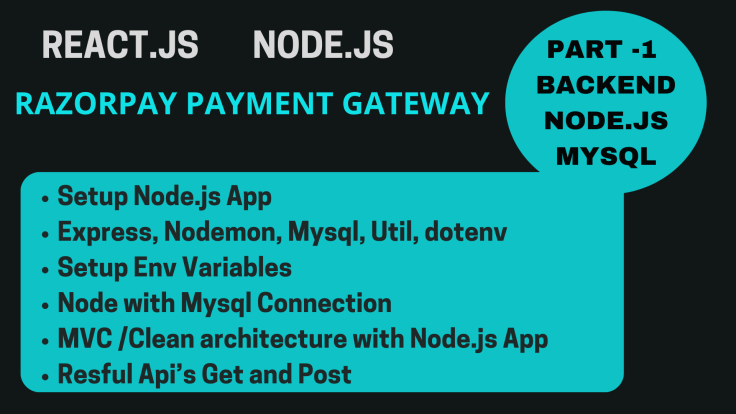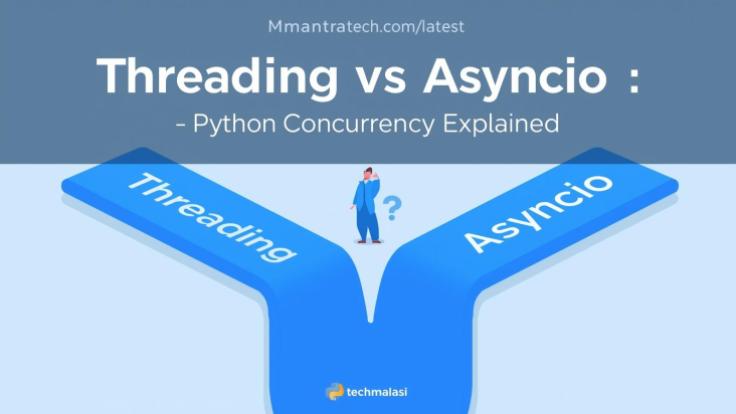How to implement RazorPay Payment Gateway with React vite App and Node.js | Mysql
- Posted on January 2, 2025
- Technology
- By MmantraTech
- 547 Views
Hi Guys, In this Blog, I will explain you through how to implement Razorpay into your React Vite app using a Node.js backend and MySQL database. I will break down the blog into two parts that is :

Frontend - Setup
Step 1: Set Up Your React Vite App
1. Initialize a React Vite Project:
2. npm create vite@latest razor-pay-front
3. cd razor-pay-front
4. npm install
Structure
index.html
<!doctype html>
<html lang="en">
<head>
<meta charset="UTF-8" />
<link rel="icon" type="image/svg+xml" href="/vite.svg" />
<meta name="viewport" content="width=device-width, initial-scale=1.0" />
<title>Vite + React</title>
<script src="https://checkout.razorpay.com/v1/checkout.js"></script>
</head>
<body>
<div id="root"></div>
<script type="module" src="/src/main.jsx"></script>
</body>
</html>
App.jsx
import { useState } from 'react'
import reactLogo from './assets/react.svg'
import viteLogo from '/vite.svg'
import './App.css'
import { Header } from './components/Header'
import Home from './components/Home'
import Footer from './components/Footer'
function App() {
const [count, setCount] = useState(0)
return (
<>
<Header/>
<Home/>
<Footer/>
</>
)
}
export default App
home.jsx
import React, { useState } from 'react';
const Home = () => {
const RAZORPAY_KEY_ID = import.meta.env.RAZORPAY_ID;
const [formData, setFormData] = useState({
name: '',
amount: '',
mobile: '',
email: '',
});
const handleChange = (e) => {
const { name, value } = e.target;
setFormData({ ...formData, [name]: value });
};
const handleSubmit = async(e) => {
e.preventDefault();
try {
// Make the API call to backend
const response = await fetch("http://localhost:3009/api/createOrder", {
method: "POST",
headers: {
"Content-Type": "application/json",
},
body: JSON.stringify({ amount: 10*100 }),
});
const order = await response.json();
console.log("Order response>>",order)
// add option for the payment gateway it can be dynamic if you want
// we can use prop drilling to make it dynamic
const options = {
key: RAZORPAY_KEY_ID,
amount: order.amount,
currency: order.currency,
name: "Tech", // Add company details
description: "Payment Testing", // Add order details
order_id: order.id,
// this is make function which will verify the payment
// after making the payment
handler: async (response) => {
try {
await fetch("http://localhost:3009/api/verify-payment", {
method: "POST",
headers: {
"Content-Type": "application/json",
},
body: JSON.stringify({
razorpay_order_id: response.razorpay_order_id,
razorpay_payment_id: response.razorpay_payment_id,
razorpay_signature: response.razorpay_signature,
}),
});
// Add onPaymentSuccessfull function here
alert("Payment successful!");
} catch (err) {
// Add onPaymentUnSuccessfull function here
alert("Payment failed: " + err.message);
}
},
prefill: {
name: "demouser", // add customer details
email: "demouser@example.com", // add customer details
contact: "1111111111", // add customer details
},
notes: {
address: "Razorpay",
},
theme: {
// you can change the gateway color from here according to your
// application theme
color: "#3399cc",
},
};
const rzp = new window.Razorpay(options);
rzp.open();
// this will open razorpay window for take the payment in the frontend
// under the hood it use inbuild javascript windows api
} catch (err) {
alert("Error creating order: " + err.message);
}
// console.log('Form Submitted:', formData);
// alert('Payment submitted successfully!');
};
return (
<main style={{ padding: '10px' }}>
<form onSubmit={handleSubmit} style={{ maxWidth: '400px', margin: '0 auto' }}>
<div style={{ marginBottom: '10px' }}>
<label>Name:</label>
<input
type="text"
name="name"
value={formData.name}
onChange={handleChange}
style={{ width: '100%', padding: '8px', marginTop: '5px' }}
required
/>
</div>
<div style={{ marginBottom: '10px' }}>
<label>Amount:</label>
<input
type="number"
name="amount"
value={formData.amount}
onChange={handleChange}
style={{ width: '100%', padding: '8px', marginTop: '5px' }}
required
/>
</div>
<div style={{ marginBottom: '10px' }}>
<label>Mobile:</label>
<input
type="tel"
name="mobile"
value={formData.mobile}
onChange={handleChange}
style={{ width: '100%', padding: '8px', marginTop: '5px' }}
required
/>
</div>
<div style={{ marginBottom: '10px' }}>
<label>Email:</label>
<input
type="email"
name="email"
value={formData.email}
onChange={handleChange}
style={{ width: '100%', padding: '8px', marginTop: '5px' }}
required
/>
</div>
<button type="submit" style={{ padding: '10px 20px', background: '#007bff', color: '#fff', border: 'none' }}>
Submit
</button>
</form>
</main>
);
};
export default Home;
header.jsx
import React from 'react'
export const Header = () => {
return (
<header style={{ fontSize:'5px', padding: '10px', background: '#333', color: '#fff' }}>
<h1>Razor payment Gateway Integration with React</h1>
</header>
)
}
footer.jsx
import React from 'react';
const Footer = () => {
return (
<footer style={{ padding: '2px', background: '#333', color: '#fff', textAlign: 'center' }}>
<p>© 2024 React Vite App. All rights reserved.</p>
</footer>
);
};
export default Footer;
Backend
Step 2: Set Up Your Node.js Backend
1. Initialize Your Node.js App:
2. mkdir backend
3. cd backend
4. npm init -y
5. npm install express body-parser cors mysql2 dotenv util razorpay
index.js
// const express = require("express");
import express from "express"
import dotenv from "dotenv"
import cors from "cors"
const app= express();
app.use(cors())
app.use(express.json());
dotenv.config();
const PORT =3009;
import usersroutes from "./app/routes/api.js";
app.use("/api",usersroutes);
app.listen(PORT,()=>{
console.log(`Server is running at http://localhost:${PORT}`);
});
route/api.js
import express from "express";
import crypto from 'crypto'; // For ES Modules
import shortid from "shortid";
const router = express.Router();
import Razorpay from 'razorpay';
const razorpay = new Razorpay({
key_id: 'rzp_test',
key_secret: 'M5',
});
router.get("/getUsers",(req,res)=>{
res.json({msg:"ok this is routing get "});
});
router.post('/createOrder', async (req, res) => {
try {
let amount = req.body.amount;
const options = {
amount: amount, // amount in the smallest currency unit
currency: 'INR',
receipt: shortid.generate(),
notes: {
// These notes will be added to your transaction. So you can search it within their dashboard.
// Also, it's included in webhooks as well. So you can automate it.
paymentFor: "testingDemo",
userId: "100",
productId: 'P100'
}
};
const order = await razorpay.orders.create(options);
res.status(200).json(order);
} catch (err) {
res.status(700).json({ error: err });
}
});
router.post('/verifyPayment', async (req, res) => {
try {
const { razorpay_order_id, razorpay_payment_id, razorpay_signature } = req.body;
const sign = razorpay_order_id + '|' + razorpay_payment_id;
const expectedSignature = crypto.createHmac('sha256', process.env.RAZORPAY_API_SECRET)
.update(sign.toString())
.digest('hex');
const isAuthentic = expectedSignature === razorpay_signature;
if (isAuthentic ) {
res.status(200).json({ message: 'success' });
} else {
res.status(400).json({ error: 'failed' });
}
} catch (err) {
res.status(500).json({ error: err.message });
}
});
export default router;
config/db.js
const mysql = require('mysql');
const connection = mysql.createConnection({
host: process.env.HOST,
user: process.env.USER,
password: process.env.PASSWORD,
database: process.env.DATABASE,
});
connection.connect((err)=>{
if(err)
{
throw err;
}
else {
console.log("Database Connected successfully")
}
});
module.exports = connection;





Write a Response